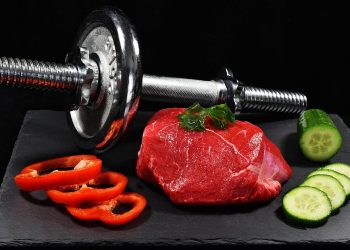Understanding Belly Fat: More Than Just Aesthetics
Belly fat, also known as visceral fat, isn’t just about appearance. It’s a serious health concern. This type of fat, which accumulates deep within the abdominal cavity and surrounds vital organs, is linked to increased risks of heart disease, type 2 diabetes, certain cancers, and even Alzheimer’s disease. That’s why understanding how to effectively and safely reduce belly fat is crucial for overall well-being.
Unlike subcutaneous fat, which lies just beneath the skin, visceral fat is metabolically active. It releases hormones and other substances that can disrupt normal bodily functions. Factors contributing to belly fat accumulation include genetics, diet, lifestyle, and hormonal changes, particularly as we age.
Dietary Strategies for a Flatter Stomach
What you eat plays a significant role in reducing belly fat. It’s not about restrictive dieting, but about making smart, sustainable choices. Here are some key dietary strategies:
1. Prioritize Protein: The Belly Fat Fighter
Protein is your ally in the fight against belly fat. It helps you feel fuller for longer, reducing overall calorie intake. It also boosts your metabolism and helps preserve muscle mass during weight loss, which is crucial for maintaining a healthy metabolic rate. Aim for protein in every meal.
- Examples: Lean meats (chicken, turkey, fish), eggs, beans, lentils, tofu, Greek yogurt, cottage cheese.
- Why it works: Protein requires more energy to digest, further contributing to calorie burn.
2. Embrace Fiber: The Digestive Regulator
Fiber, especially soluble fiber, absorbs water and forms a gel-like substance in your digestive system. This slows down the movement of food, making you feel fuller and reducing cravings. Fiber also promotes a healthy gut microbiome, which is linked to better weight management.
- Examples: Oats, barley, apples, oranges, berries, broccoli, Brussels sprouts, beans, peas.
- Why it works: Soluble fiber binds to dietary fat in the intestines, reducing its absorption.
3. Cut Back on Added Sugars: The Silent Saboteur
Added sugars, particularly those found in sugary drinks, processed foods, and desserts, are major contributors to belly fat. Fructose, a type of sugar common in sweetened beverages, is metabolized primarily in the liver and can lead to fat accumulation in the abdomen.
- Examples of foods to limit: Soda, juice, candy, pastries, processed snacks, sweetened cereals.
- Why it works: Reducing sugar intake lowers insulin levels, promoting fat burning.
4. Choose Healthy Fats: The Satiety Booster
Not all fats are created equal. Monounsaturated and polyunsaturated fats, found in foods like avocados, nuts, seeds, and olive oil, can actually help reduce belly fat. These fats promote satiety, improve insulin sensitivity, and support overall health.
- Examples: Avocados, almonds, walnuts, chia seeds, flaxseeds, olive oil, fatty fish (salmon, tuna).
- Why it works: These fats help regulate blood sugar levels and reduce inflammation.
5. Limit Refined Carbohydrates: The Energy Crasher
Refined carbohydrates, such as white bread, white rice, and processed snacks, are quickly digested and can cause rapid spikes in blood sugar and insulin levels. This can lead to increased fat storage, particularly in the abdominal area.
- Examples of foods to limit: White bread, white rice, pasta, pastries, processed cereals, sugary snacks.
- Why it works: Replacing refined carbs with whole grains stabilizes blood sugar and promotes satiety.
Exercise Strategies: Burning Belly Fat and Building Muscle
While diet is crucial, exercise is essential for maximizing belly fat loss and improving overall fitness. A combination of cardiovascular exercise and strength training is the most effective approach.
1. Cardiovascular Exercise: The Calorie Torcher
Cardio exercises, such as running, swimming, cycling, and brisk walking, burn calories and help reduce overall body fat, including belly fat. Aim for at least 150 minutes of moderate-intensity cardio or 75 minutes of vigorous-intensity cardio per week.
- Examples: Running, swimming, cycling, brisk walking, dancing, hiking.
- Why it works: Cardio increases your heart rate and metabolism, leading to greater calorie expenditure.
2. Strength Training: The Muscle Builder
Strength training builds muscle mass, which boosts your metabolism and helps you burn more calories even when you’re at rest. Muscle also helps improve insulin sensitivity, which is crucial for preventing belly fat accumulation. Aim for strength training at least two days per week, working all major muscle groups.
- Examples: Weightlifting, bodyweight exercises (push-ups, squats, lunges), resistance band exercises.
- Why it works: Muscle tissue is more metabolically active than fat tissue, so more muscle means more calories burned at rest.
3. High-Intensity Interval Training (HIIT): The Time Saver
HIIT involves short bursts of intense exercise followed by brief periods of rest or low-intensity exercise. It’s a highly effective way to burn calories, improve cardiovascular fitness, and reduce belly fat in a shorter amount of time compared to traditional cardio.
- Examples: Sprinting intervals, burpees, jumping jacks, mountain climbers.
- Why it works: HIIT elevates your heart rate and metabolism for a longer period of time after the workout, leading to greater calorie burn.
Lifestyle Adjustments: Beyond Diet and Exercise
Beyond diet and exercise, several lifestyle factors can influence belly fat accumulation. Making adjustments to these areas can significantly contribute to your weight loss efforts.
1. Stress Management: The Cortisol Controller
Chronic stress can lead to increased cortisol levels, a hormone that promotes fat storage, particularly in the abdominal area. Finding healthy ways to manage stress is crucial for preventing belly fat accumulation.
- Examples: Meditation, yoga, deep breathing exercises, spending time in nature, pursuing hobbies.
- Why it works: Lowering cortisol levels reduces fat storage and promotes a healthier metabolism.
2. Adequate Sleep: The Metabolic Regulator
Lack of sleep can disrupt hormone levels, leading to increased appetite, cravings for unhealthy foods, and reduced metabolism. Aim for 7-9 hours of quality sleep per night.
- Examples: Establishing a regular sleep schedule, creating a relaxing bedtime routine, optimizing your sleep environment.
- Why it works: Adequate sleep helps regulate hormones that control appetite, metabolism, and fat storage.
3. Limit Alcohol Consumption: The Empty Calorie Source
Alcohol is high in calories and can contribute to belly fat accumulation. Excessive alcohol consumption can also impair liver function and disrupt hormone levels.
- Examples: Limiting alcoholic beverages to one or two per day, choosing lower-calorie options, alternating alcoholic drinks with water.
- Why it works: Reducing alcohol intake reduces calorie intake and supports liver function.
4. Stay Hydrated: The Metabolic Booster
Drinking plenty of water throughout the day can help boost your metabolism, reduce appetite, and prevent overeating. It also helps your body function optimally, which is essential for weight loss.
- Examples: Carrying a water bottle with you, setting reminders to drink water throughout the day, adding flavor to your water with fruits or herbs.
- Why it works: Water helps you feel fuller, reducing cravings, and supports optimal metabolic function.
Supplements: Can They Help?
While supplements can be tempting, they are not a magic bullet for belly fat loss. It’s crucial to focus on diet, exercise, and lifestyle changes first. However, some supplements may offer modest benefits when combined with a healthy lifestyle. Always consult with a healthcare professional before taking any supplements.
- Green Tea Extract: May boost metabolism and fat burning.
- Caffeine: Can increase energy expenditure and fat oxidation.
- Soluble Fiber Supplements: May promote satiety and reduce calorie intake.
Setting Realistic Goals and Tracking Progress
Losing belly fat takes time and effort. It’s important to set realistic goals and track your progress to stay motivated. Don’t expect overnight results. Aim for gradual, sustainable changes that you can maintain over the long term.
Track your weight, waist circumference, and body fat percentage regularly. Take progress photos to visualize your improvements. Celebrate your successes along the way, and don’t get discouraged by setbacks. Remember that consistency is key.
Conclusion
Reducing belly fat is achievable through a combination of healthy dietary choices, regular exercise, and mindful lifestyle adjustments. There’s no magic bullet, and consistency is key. Focus on making sustainable changes that you can incorporate into your daily routine. By prioritizing protein, fiber, and healthy fats, limiting added sugars and refined carbohydrates, engaging in regular cardio and strength training, managing stress, and getting adequate sleep, you can effectively reduce belly fat and improve your overall health and well-being. Remember to consult with a healthcare professional or registered dietitian for personalized guidance.
Frequently Asked Questions (FAQs)
Here are some frequently asked questions about belly fat loss:
Q: How quickly can I lose belly fat?
A: The rate of belly fat loss varies depending on individual factors such as genetics, metabolism, and lifestyle. A realistic goal is to lose 1-2 pounds of fat per week. Focus on sustainable changes rather than quick fixes.
Q: Is it possible to target belly fat specifically?
A: While you can’t spot-reduce fat, a comprehensive approach that includes diet, exercise, and lifestyle changes will lead to overall fat loss, including belly fat.
Q: What are some healthy snack options for belly fat loss?
A: Great snack options include Greek yogurt with berries, a handful of almonds, a hard-boiled egg, sliced vegetables with hummus, or a protein smoothie.
Q: Can intermittent fasting help with belly fat loss?
A: Intermittent fasting may be an effective strategy for some individuals, but it’s not for everyone. Consult with a healthcare professional or registered dietitian before trying intermittent fasting.
Q: Are there any specific exercises that target belly fat?
A: While you can’t target belly fat directly, core exercises such as planks, crunches, and Russian twists can strengthen your abdominal muscles and improve your posture.
Q: How important is sleep for losing belly fat?
A: Sleep is crucial for regulating hormones that control appetite, metabolism, and fat storage. Aim for 7-9 hours of quality sleep per night.
Q: Is it safe to take weight loss supplements?
A: Many weight loss supplements are not regulated and may contain harmful ingredients. Always consult with a healthcare professional before taking any supplements.
Q: What if I’m not seeing results despite my efforts?
A: If you’re not seeing results, re-evaluate your diet, exercise routine, and lifestyle habits. Consult with a healthcare professional or registered dietitian to identify potential barriers and develop a personalized plan.
Q: How can I stay motivated on my belly fat loss journey?
A: Set realistic goals, track your progress, celebrate your successes, find a support system, and focus on the long-term benefits of a healthy lifestyle.
Q: Is it possible to lose belly fat after menopause?
A: It can be more challenging to lose belly fat after menopause due to hormonal changes, but it’s definitely possible. Focus on a healthy diet, regular exercise, and stress management.












